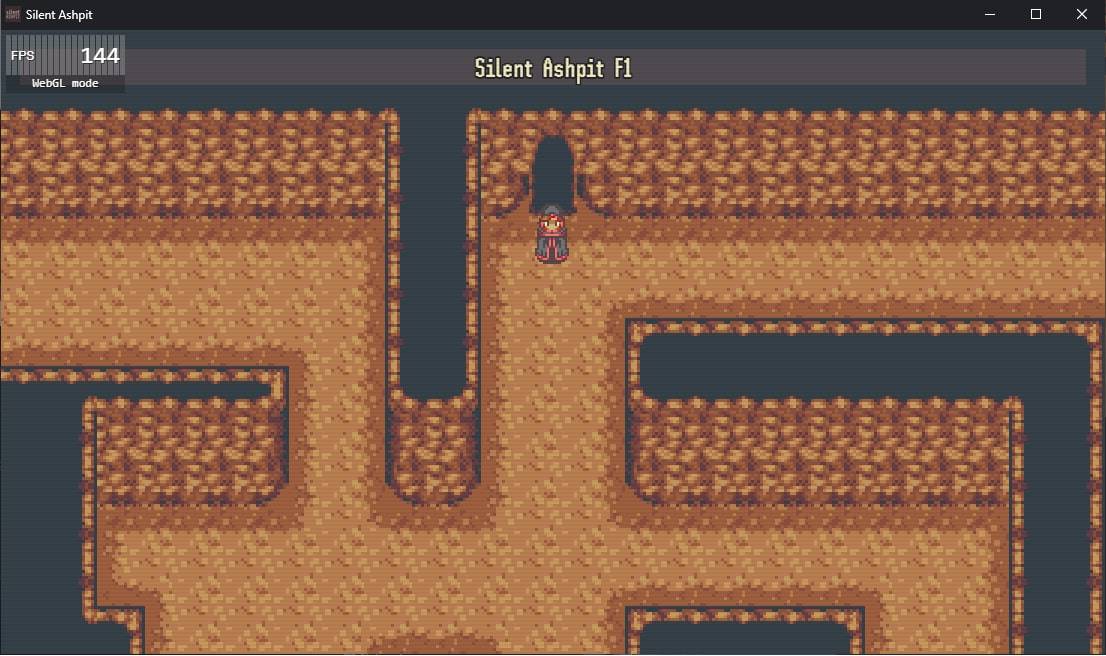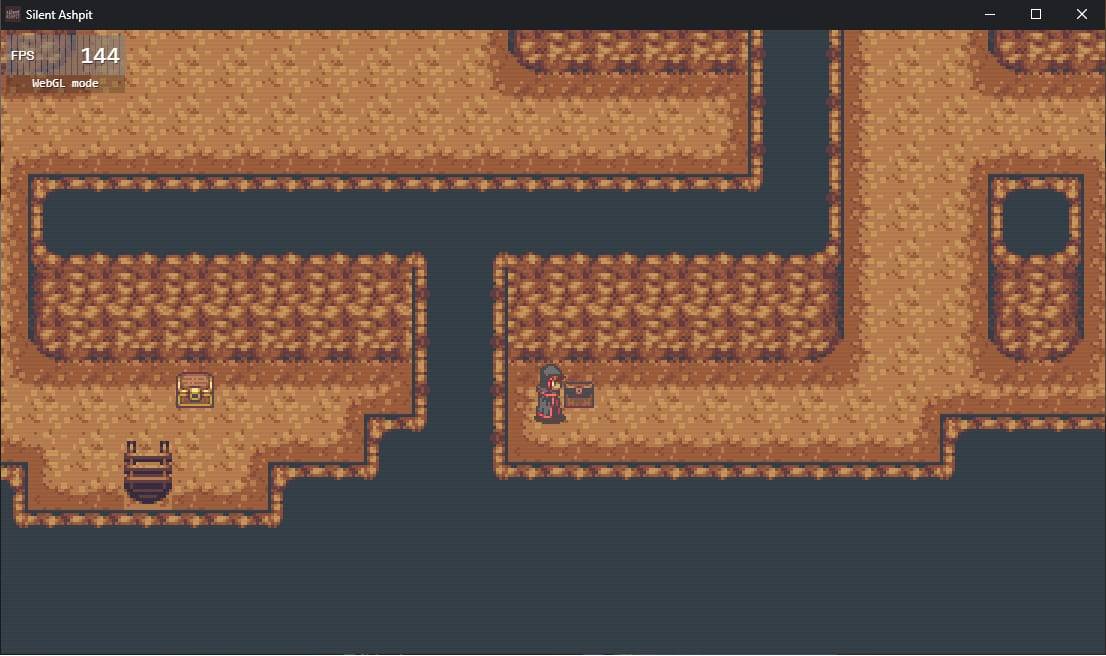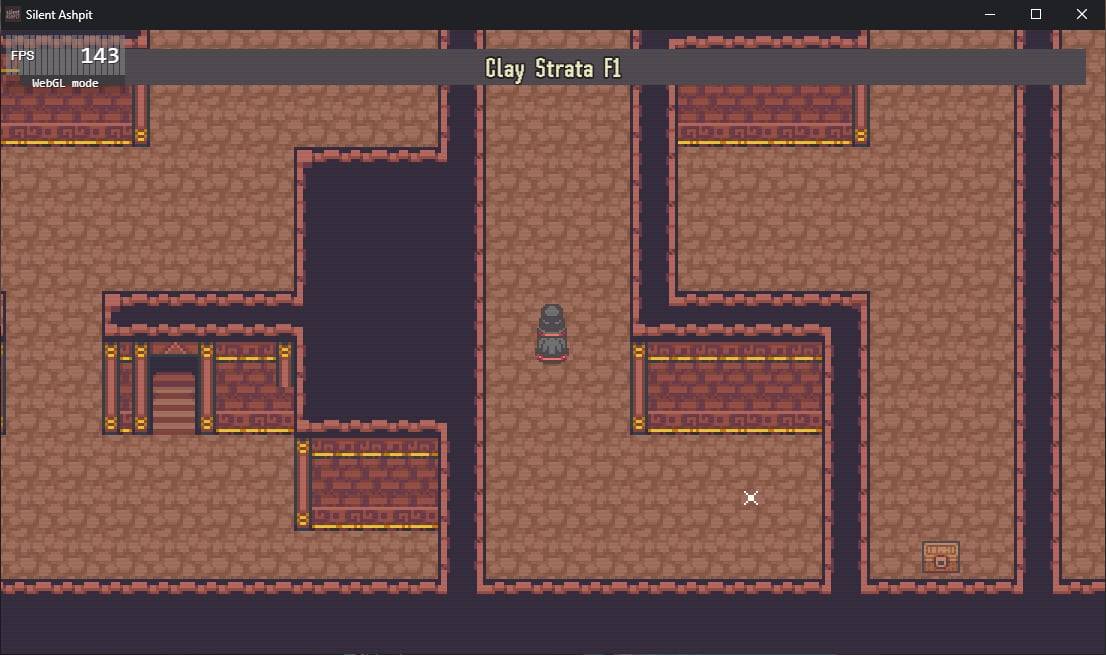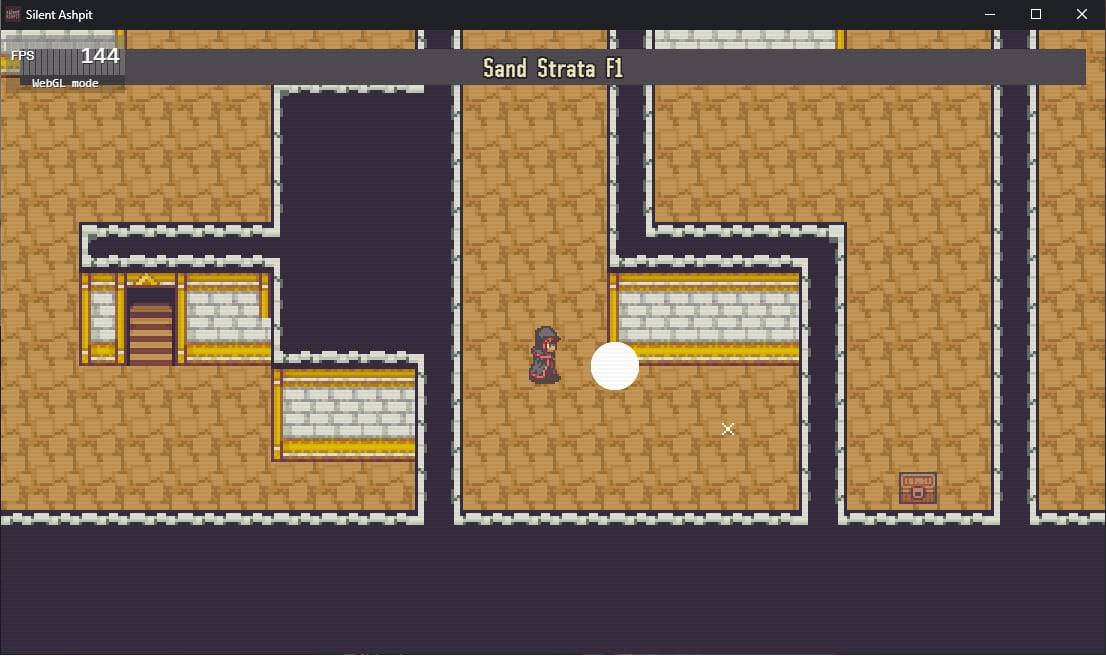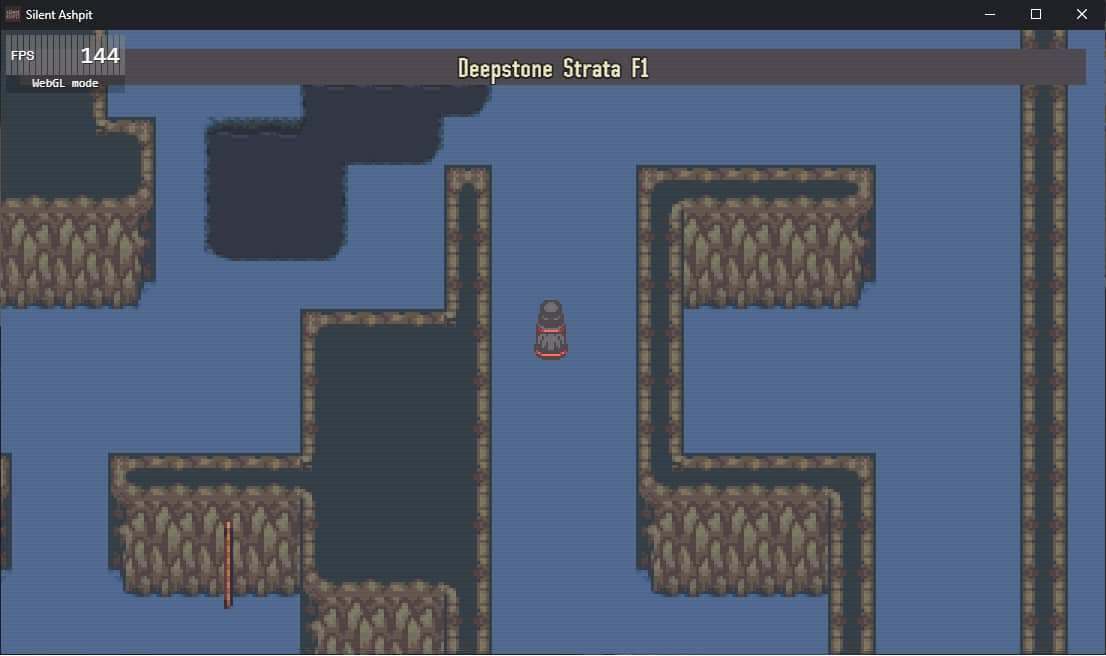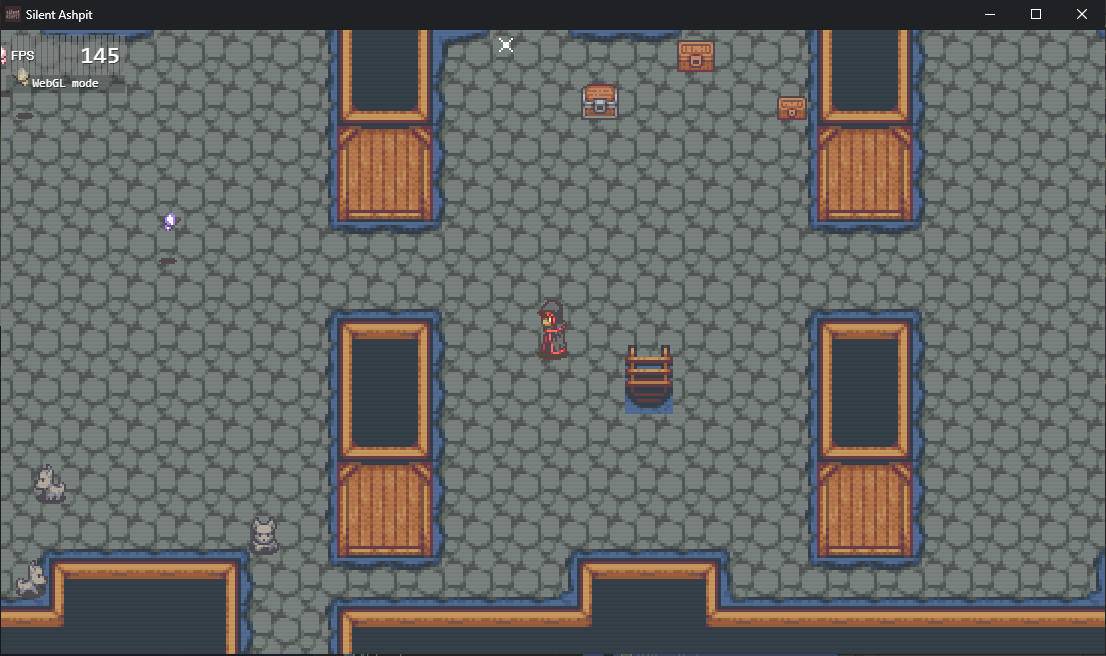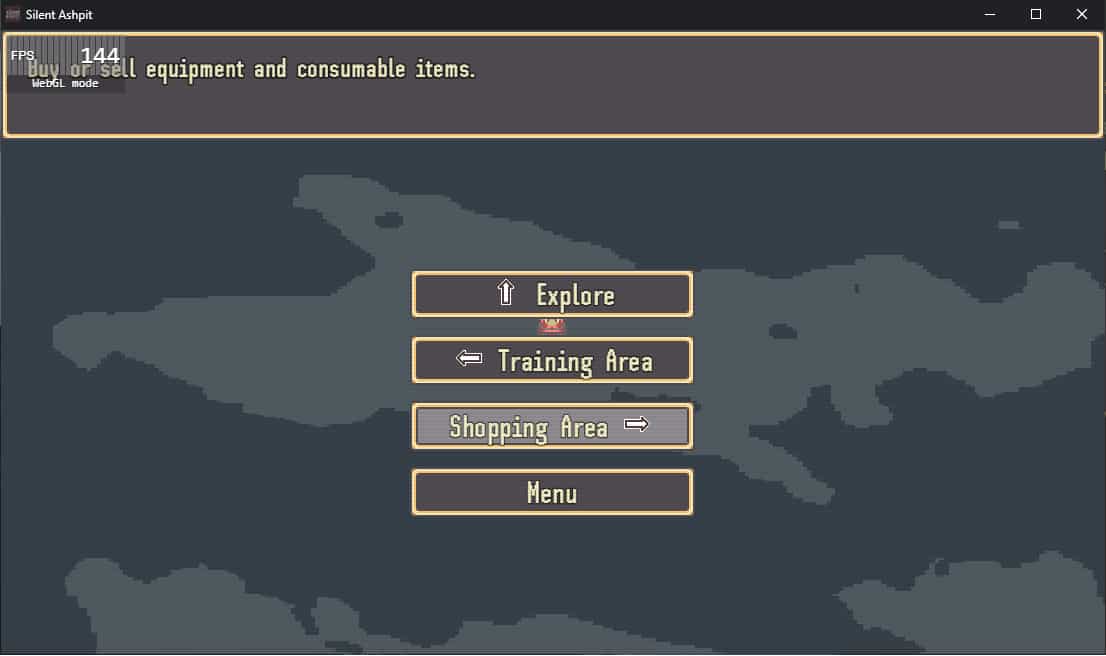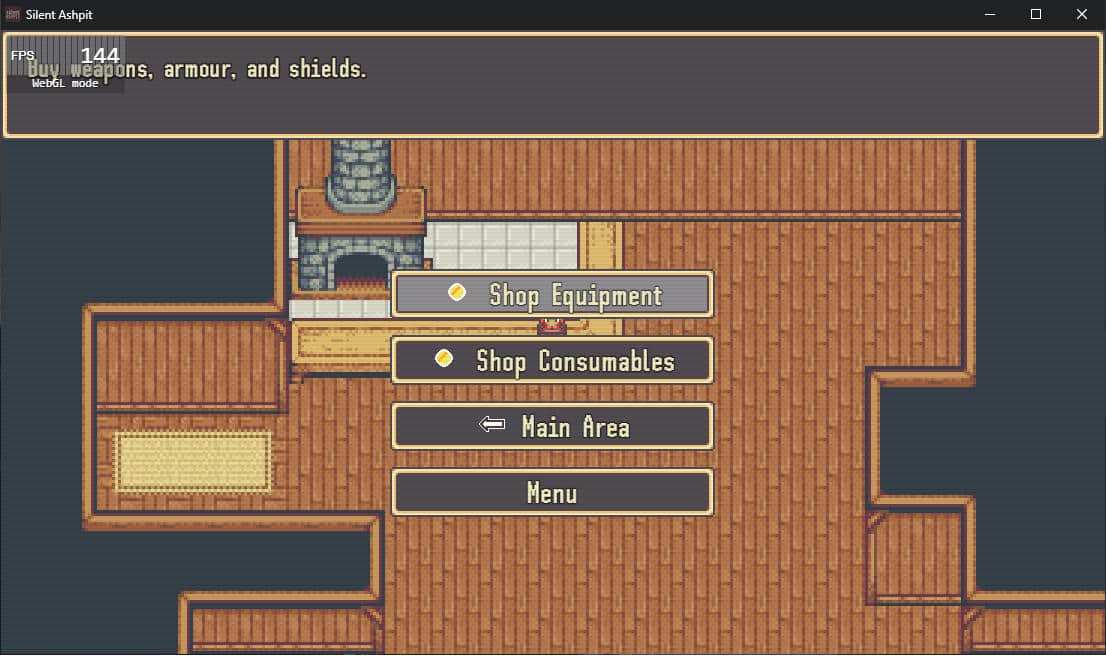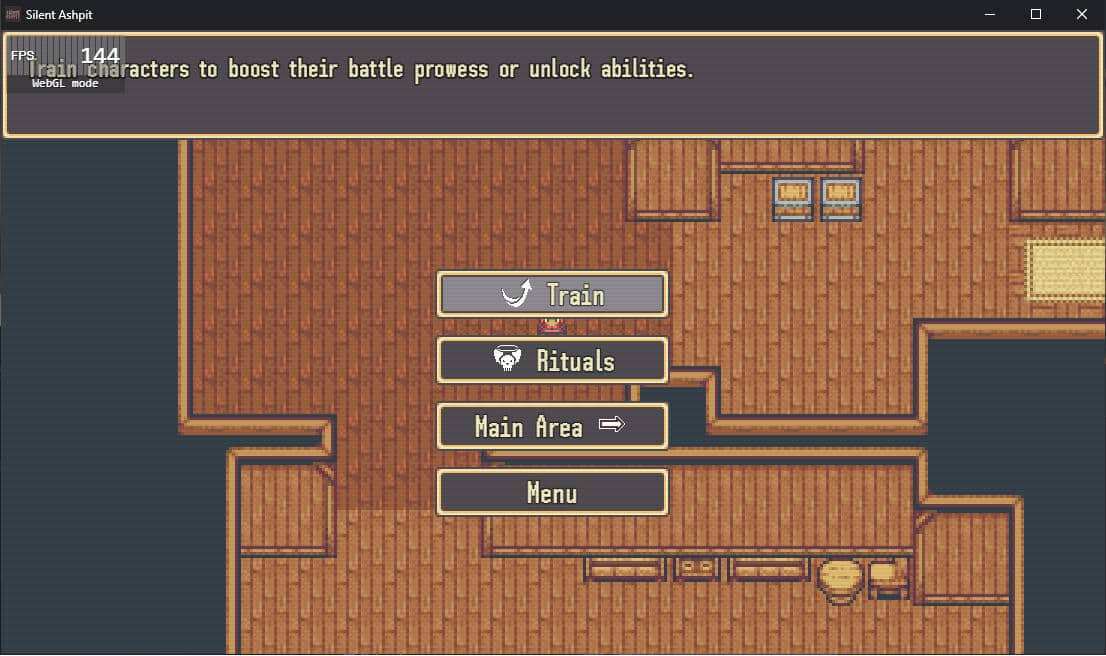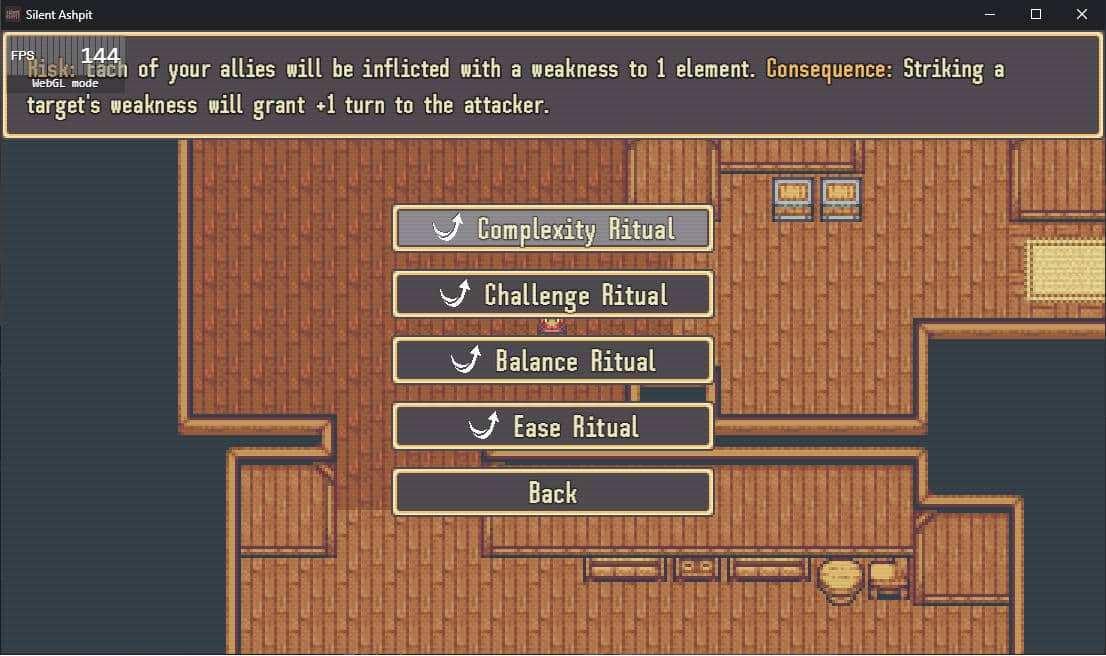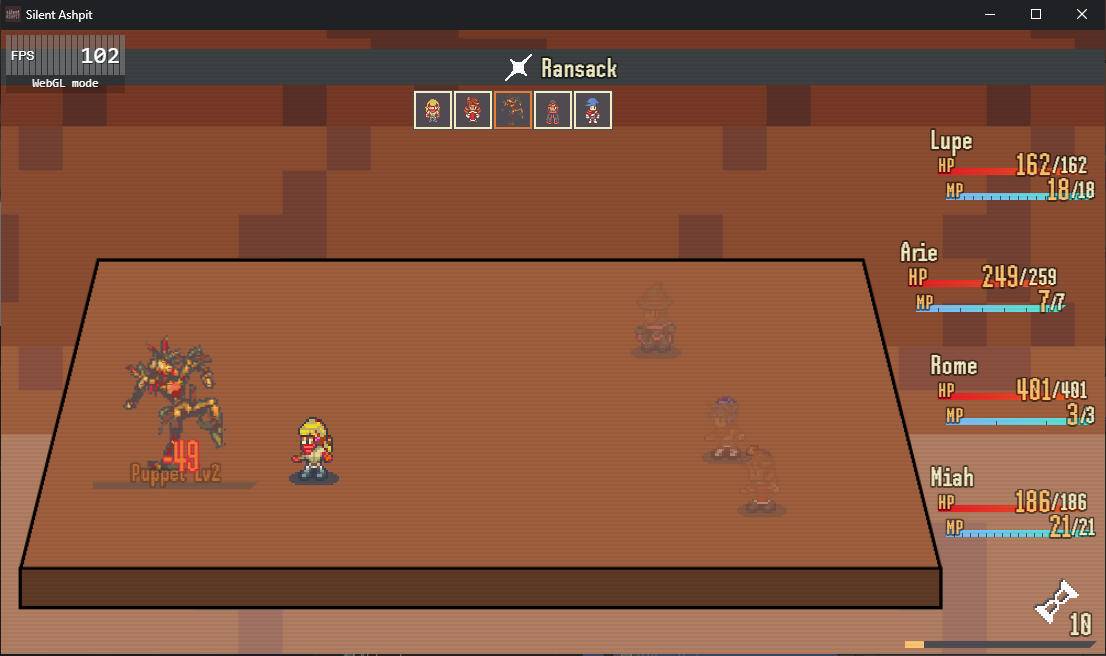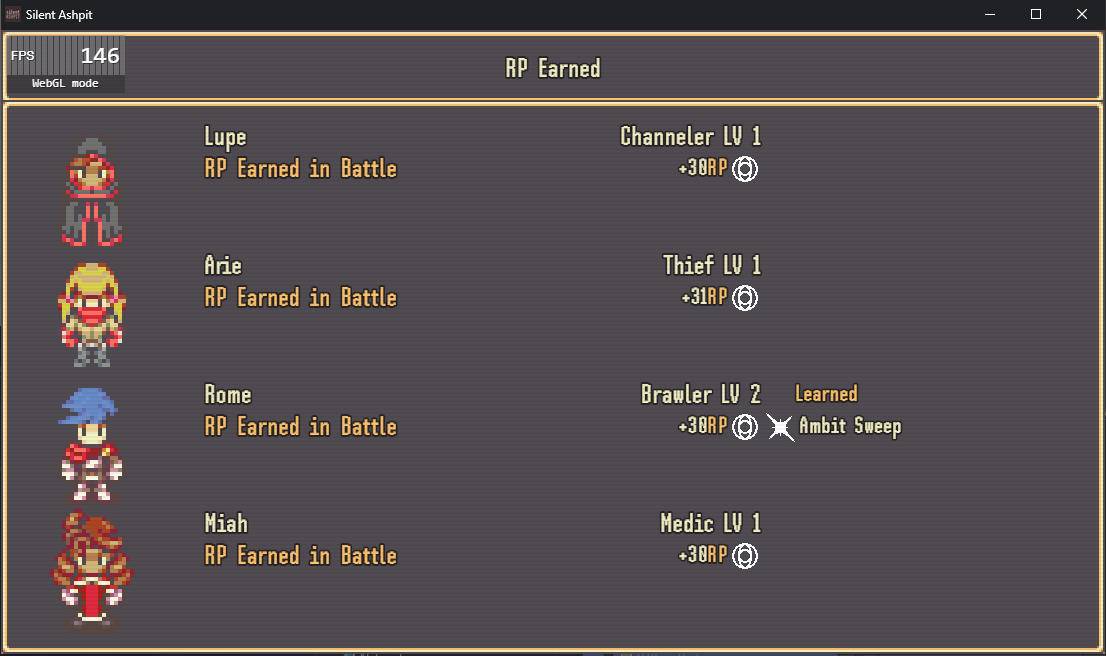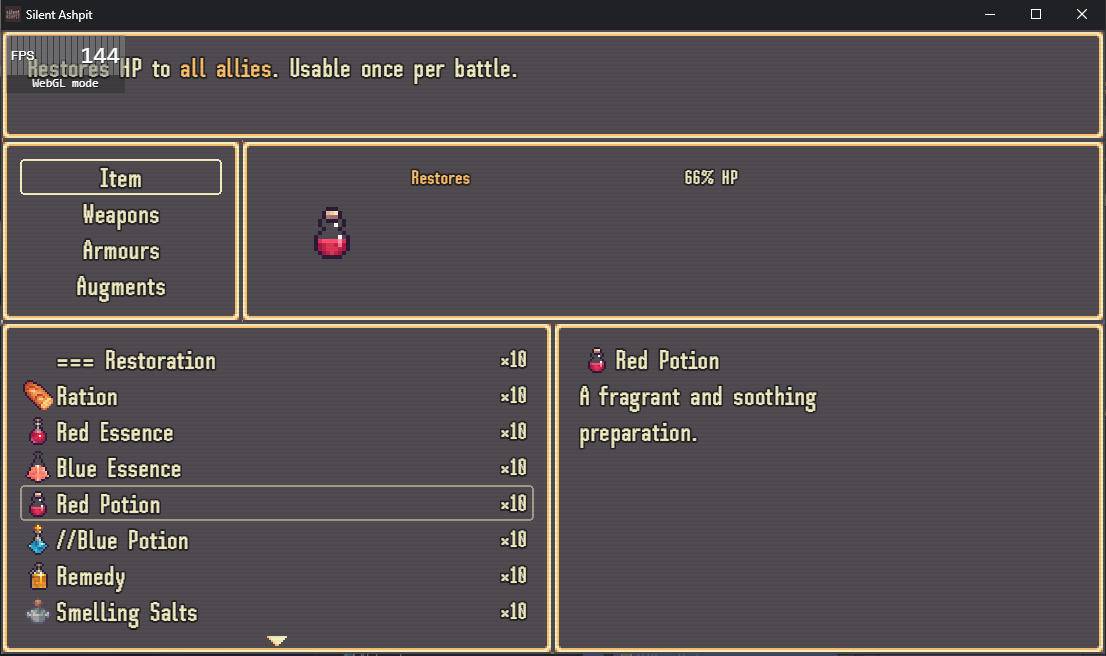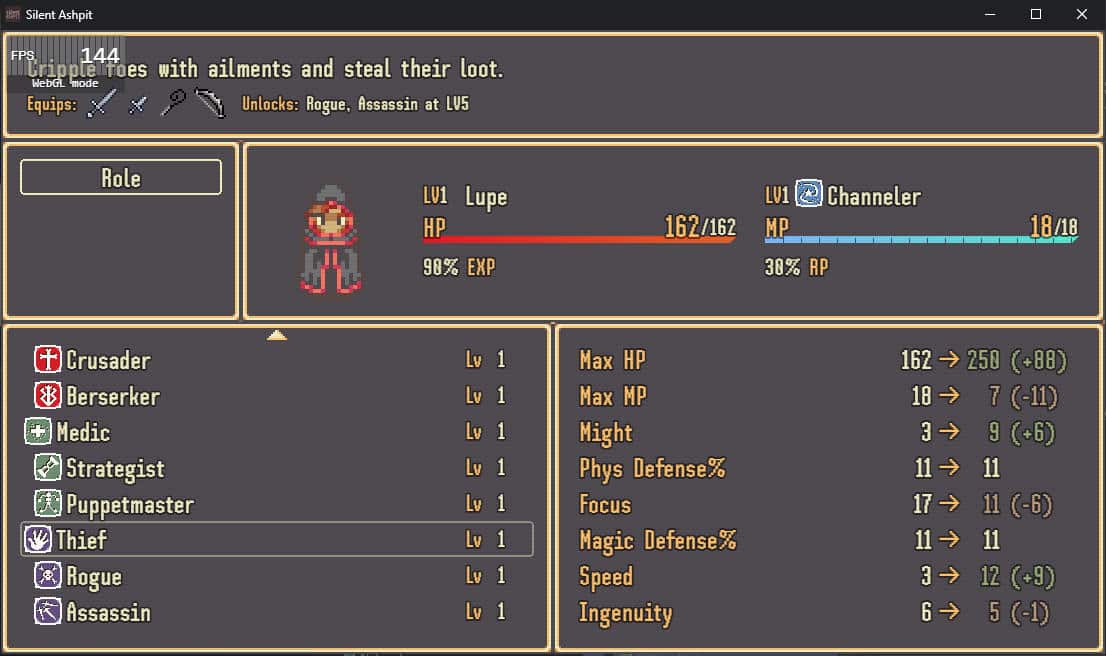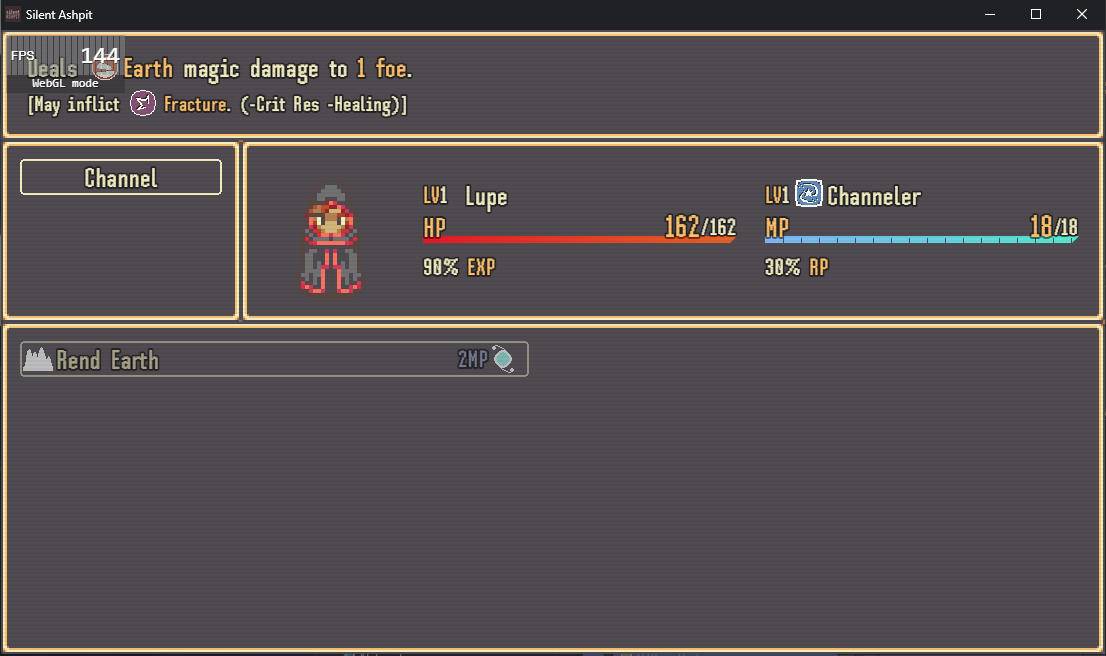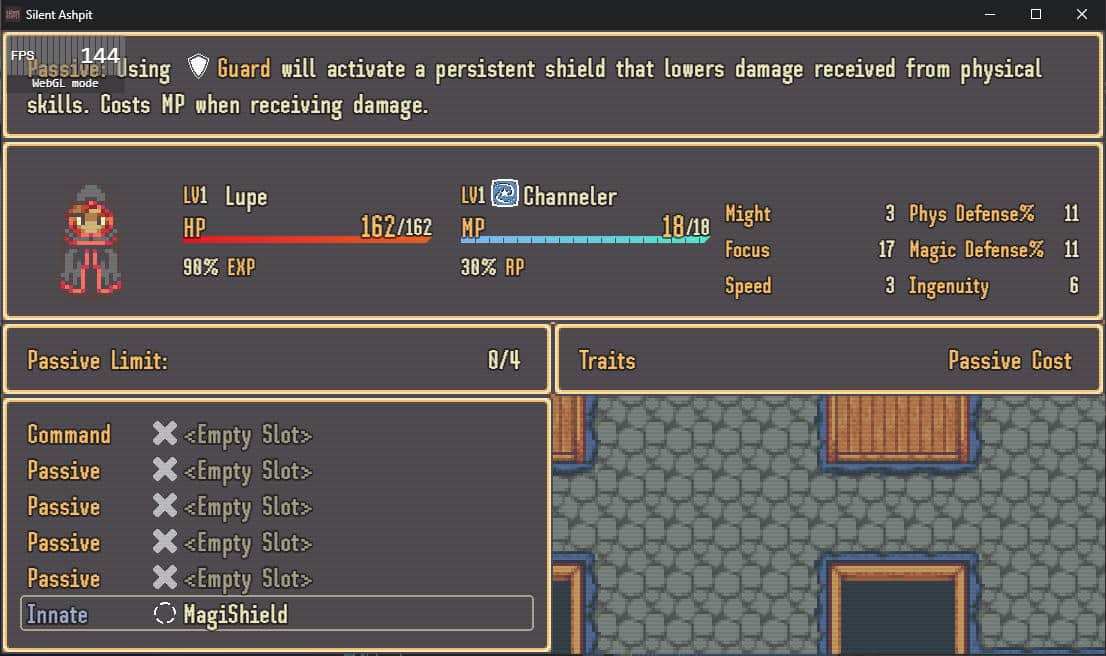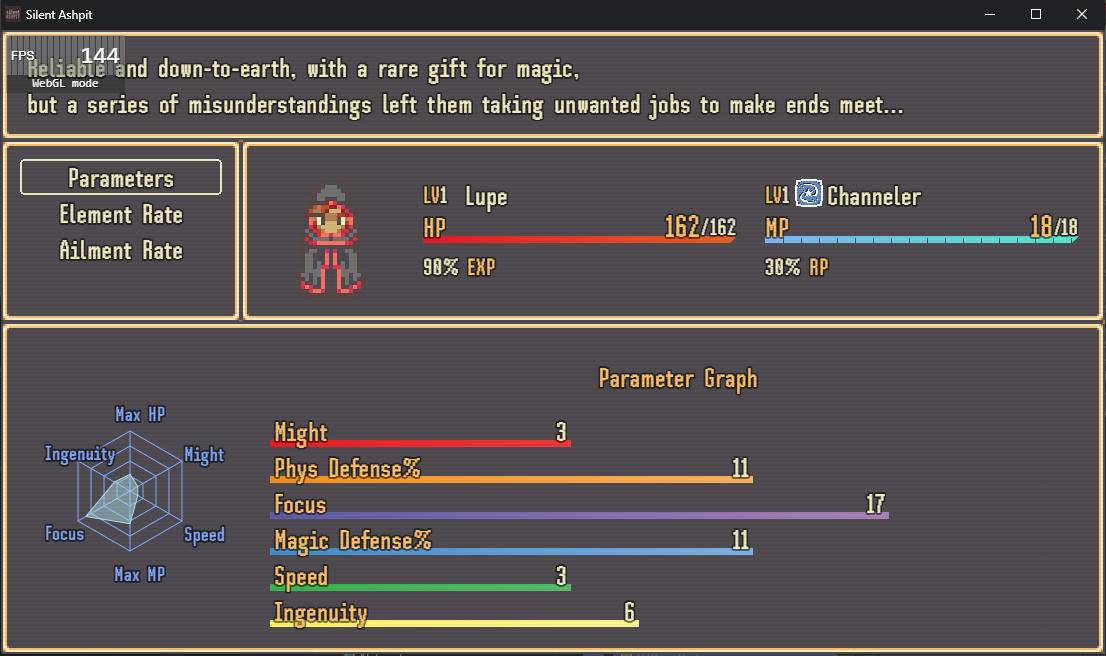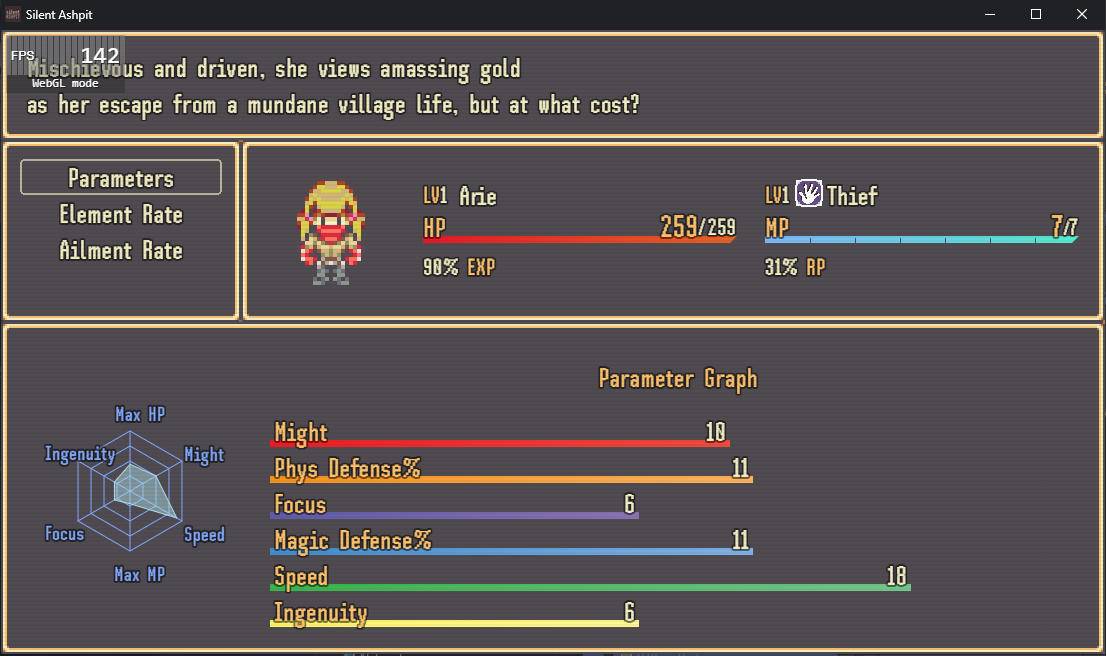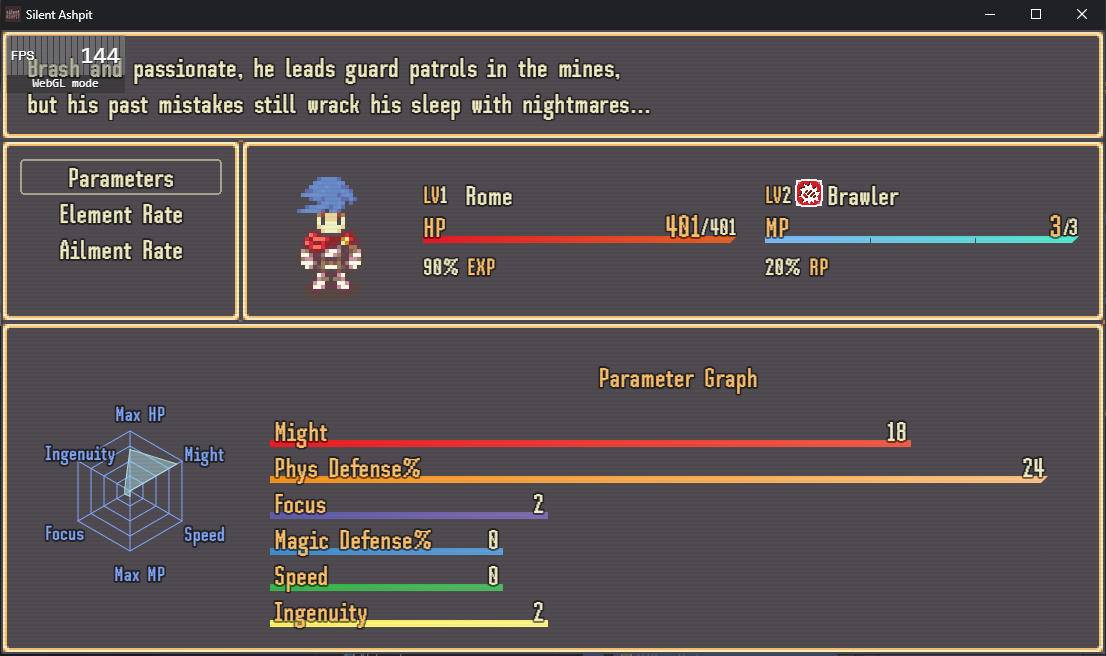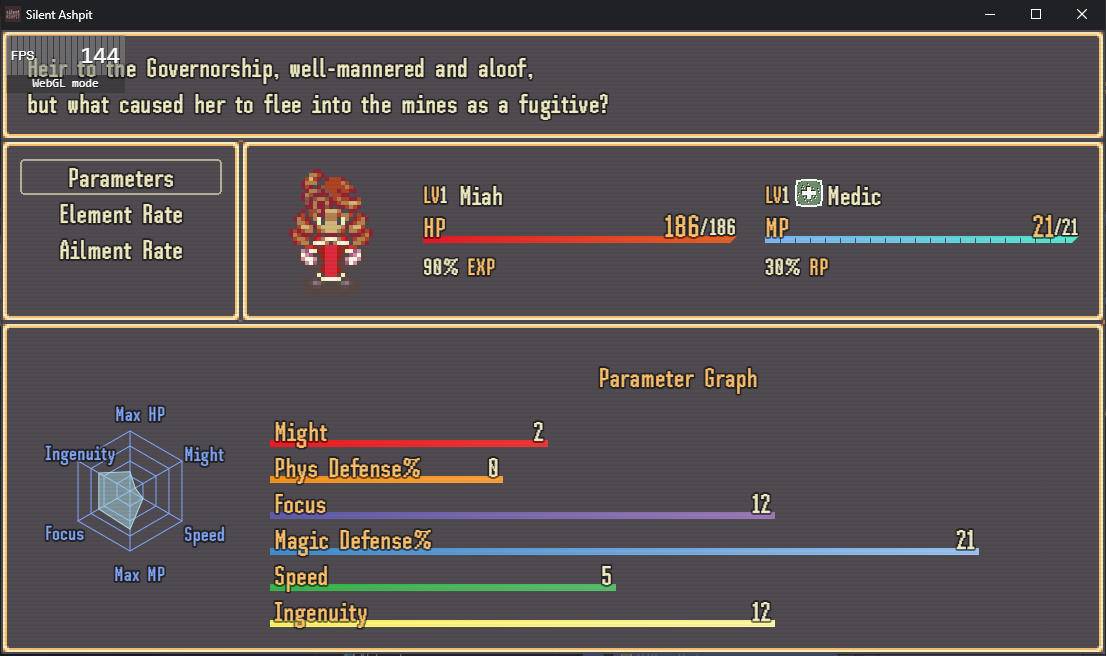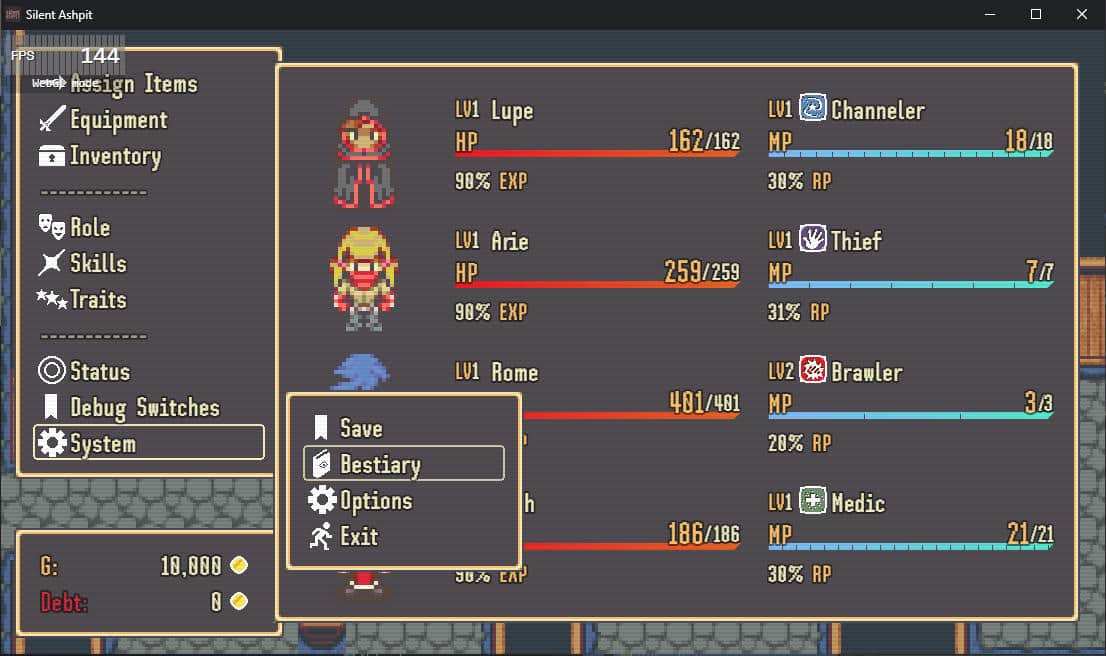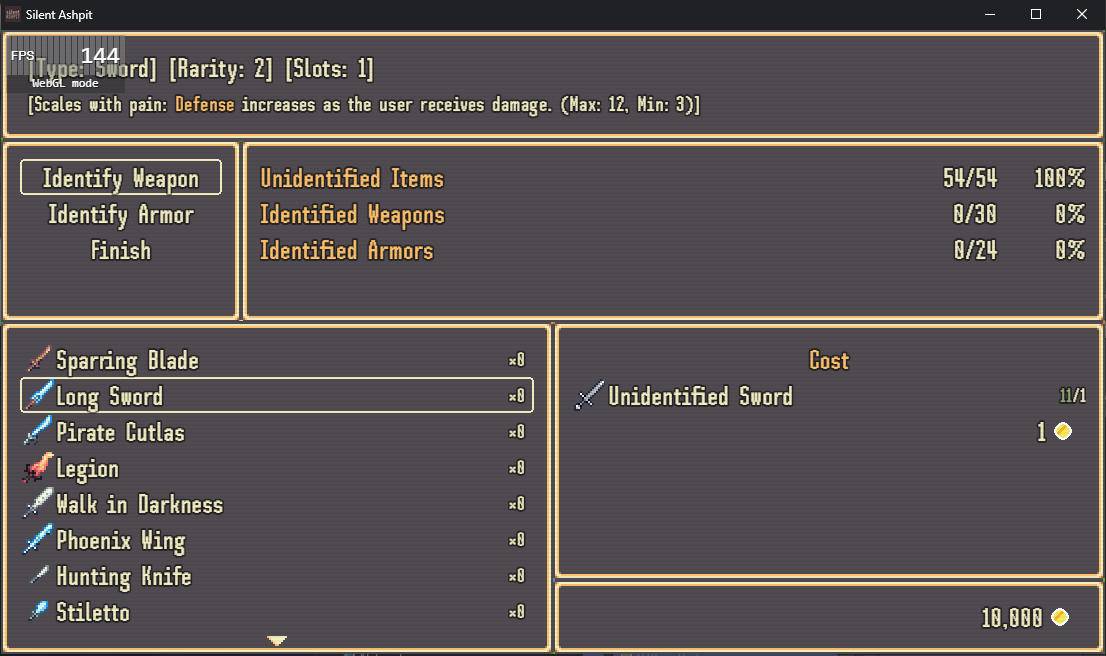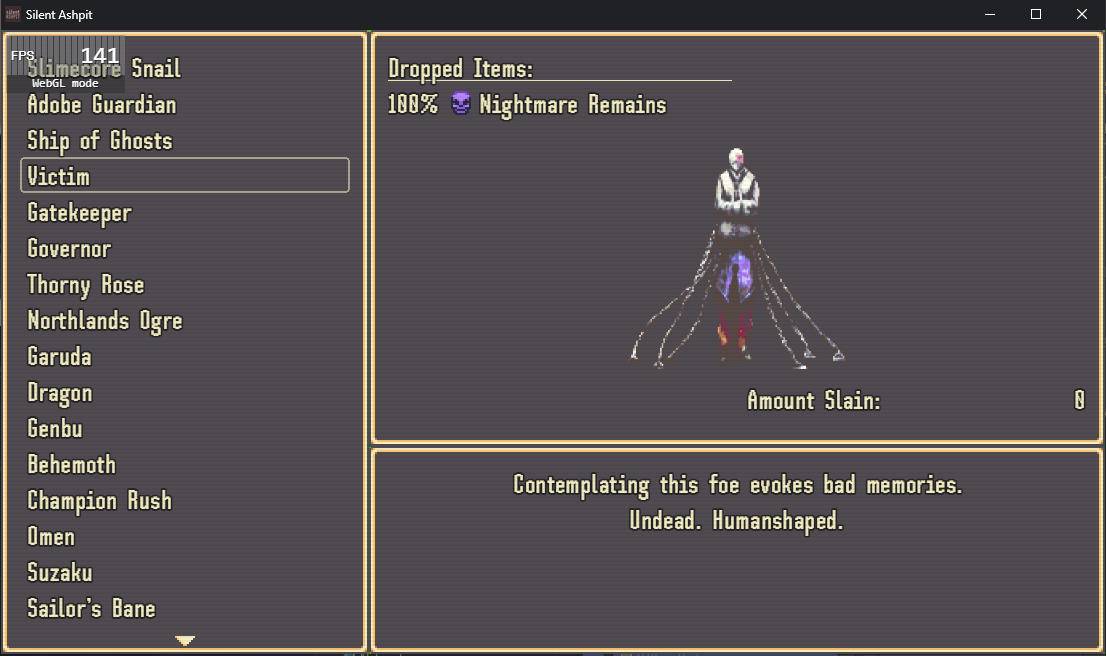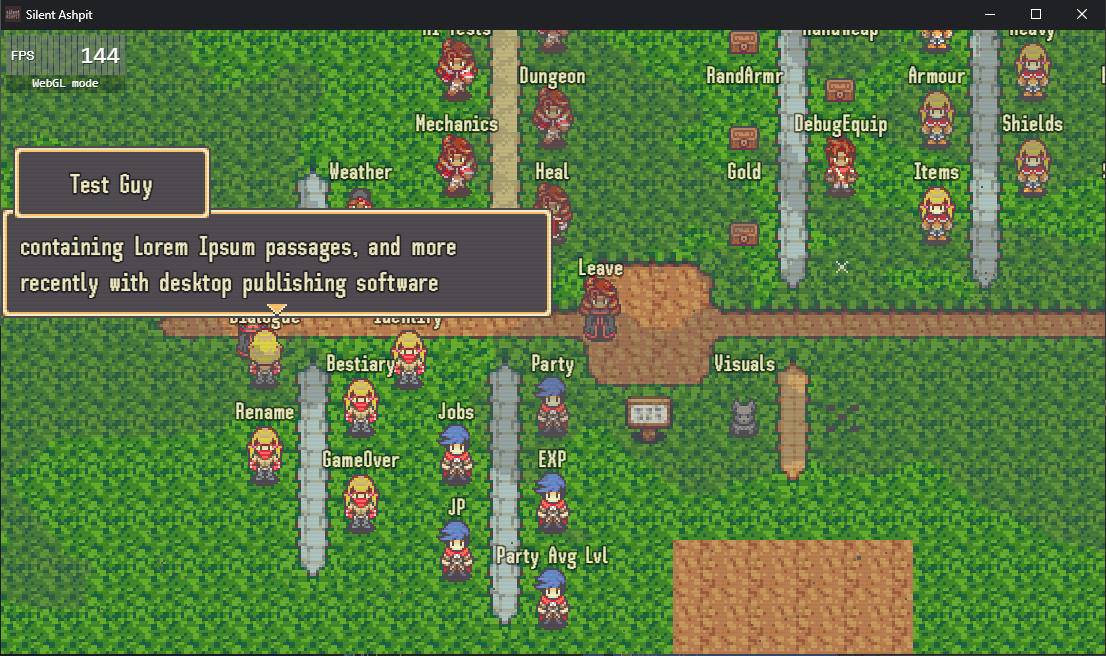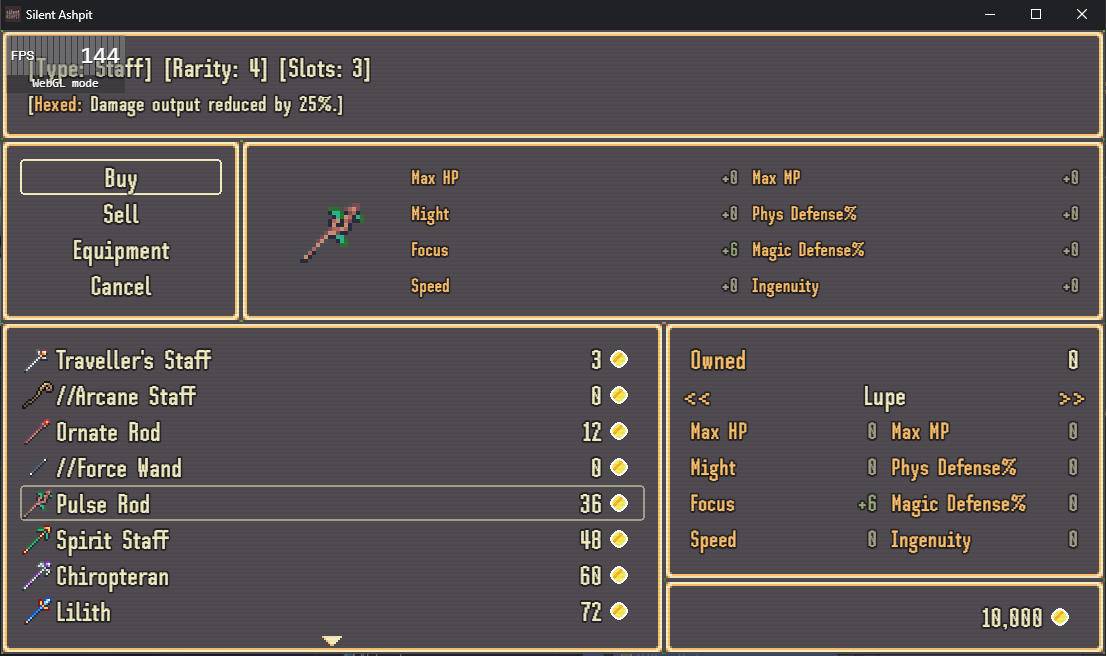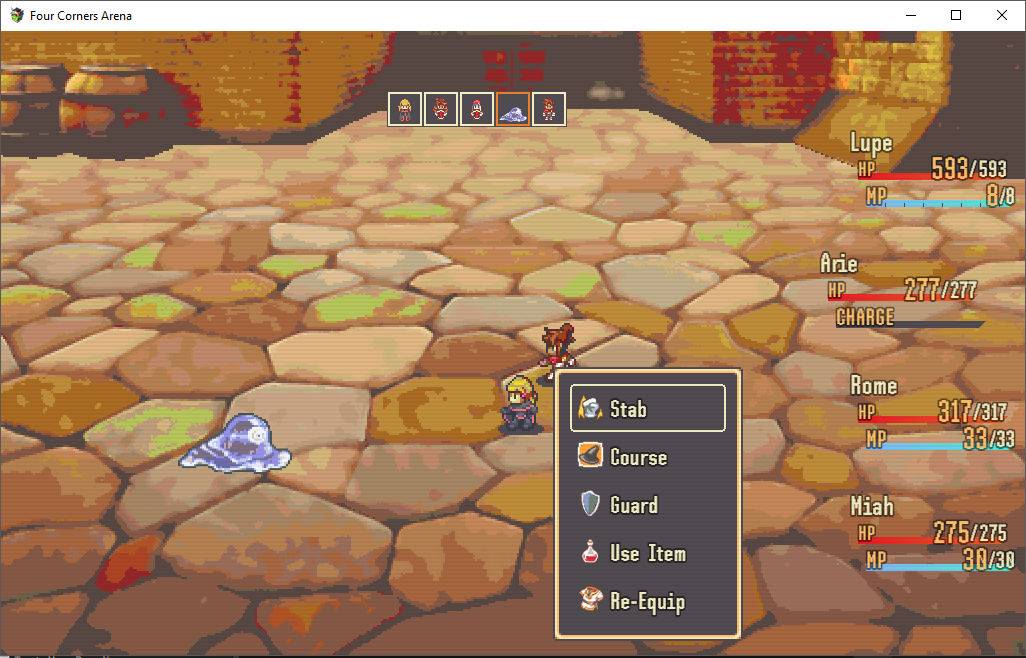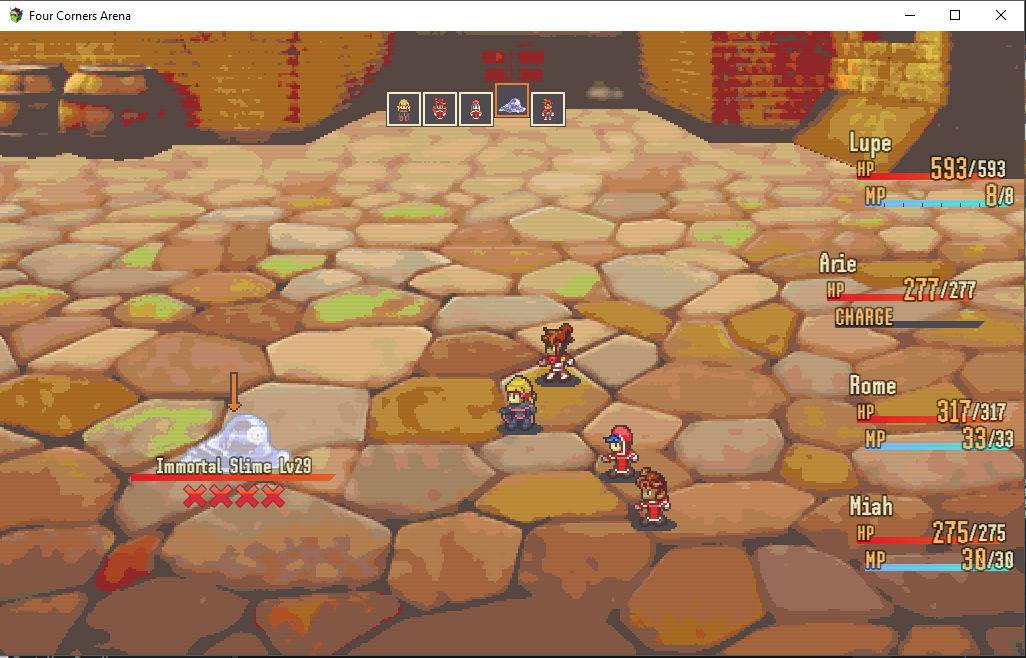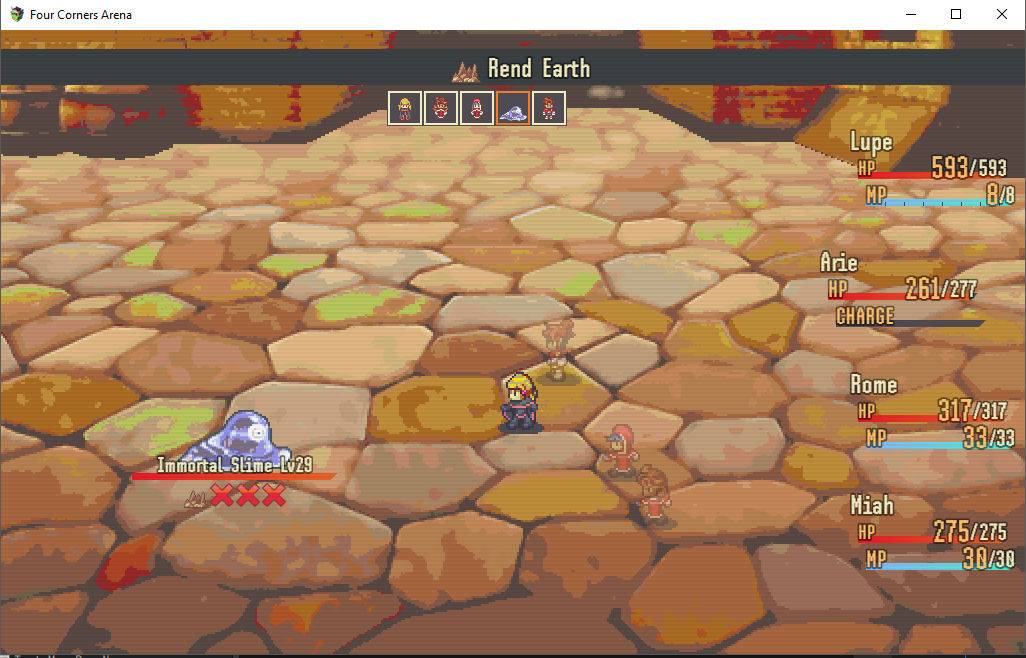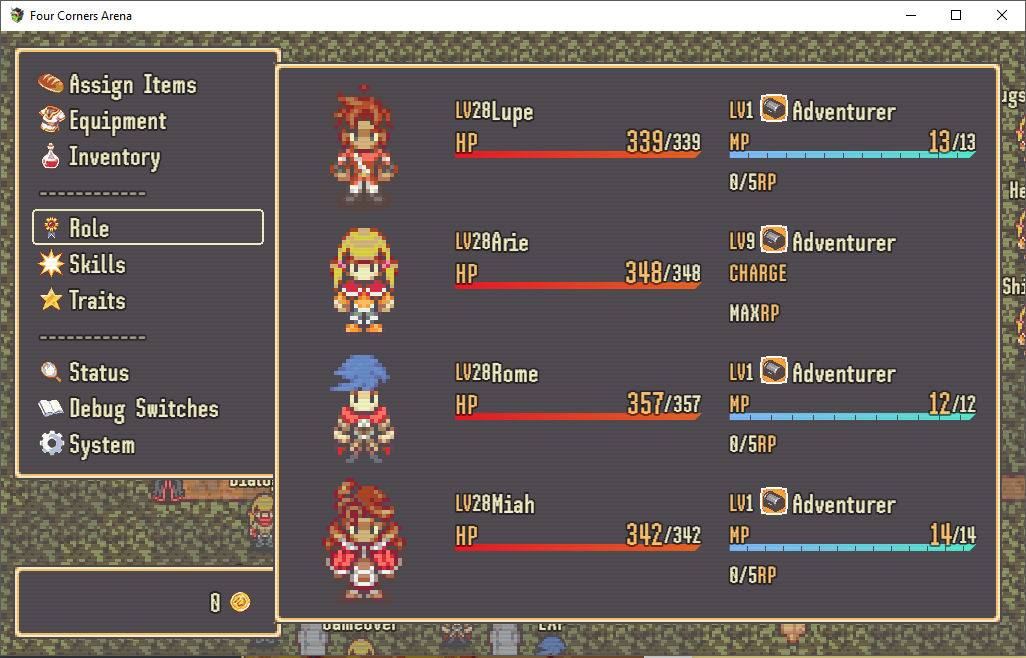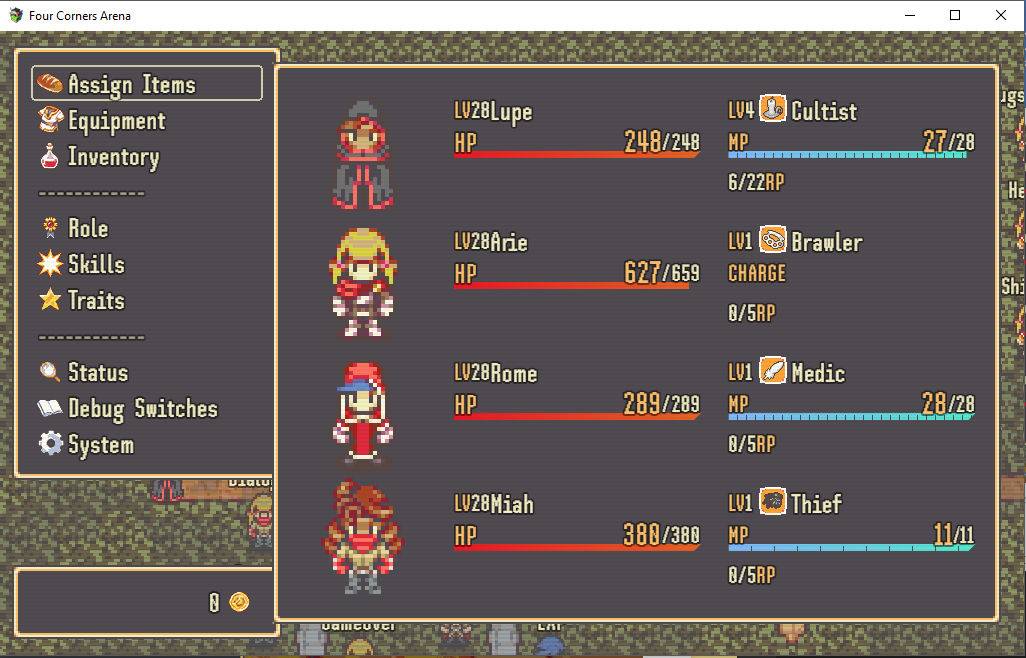About a year ago, I realized this game project was unsustainable. I should have been aiming for a minimum viable product, so I could play through it and evaluate the ideas I was putting into the game. Instead, I kept changing the features on a whim, and re-balancing the minutiae despite not having an idea of the bigger picture. This game would never be finished.
So, I decided to make three games instead of one.
And then there were three
In a way, it’s more work – but it’s a necessary step to releasing a finished project. Each game concept is focused. By completing smaller projects and working my way up in complexity, I’ll be able to learn how to successfully complete a game without feature bloat.
Here are my concepts:
1. The Club
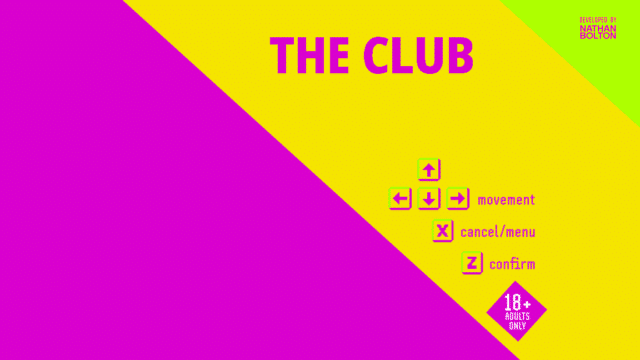
In this world, there are cliques and cliches.
The DJ at your local gay club is possessed by a demon!
… Or something like that.
The point is, he won’t accept your song suggestions.
Win as many people onto your side as possible and confront the DJ!
Style
- Comedic, irreverent
- Neon colours
- Chiptune dance music
Gameplay
- Goal: Recruit as many party members as you can, and then challenge the boss
- Start with a randomized party
- 1 of each class
- random character names
- random equipment
- Item descriptions are silly
- Recruit new party members
- By winning them over with a rock-paper-scissors dialog system
- Or recruit them in battle (on the dance floor) by using moves that boost their Climax
- Combat
- Simple, turn-based
- Recruit enemies by boosting their Climax
- Or quickly send them home by chipping away at their Stamina
- 4 character classes
- Jock
- Twink
- Bear
- Queen
- Play time: 10~20 minutes
2. The Mountain

In this world, city states cling to the world’s peaks, and the lands below are swamped with choking miasma.
For short periods, storms sweep away the toxic air. At these times, scavengers from each kingdom must forage for supplies.
Gather 10 rations and 10 salvage. Then return to the mountain plateau before the miasma returns.
Battles with enemies and journeying between areas will each take 1 hour. You have 24 hours to complete your mission.
Style
- Light on story, heavy on mechanics
- Bright, fantasy palette
- Humanity will be run-down, but nature will be thriving
- Music that evokes mystery
Gameplay
- Focused on a tight time-limit, and meaningful mechanical choices
- Every meaningful action takes 1 hour from your total 24 hour limit
- The item economy is tight: you can use a Ration to heal your party, but you need to keep at least 10 rations to complete the game
- Journey down a mountain through a small series of maps, making choices about whether to battle or avoid enemies
- In future: Possibly expand into a rogue-lite style where you start from scratch at the beginning of the run after each failure – but with character EXP saved
- In future: Possibly build more maps than absolutely required, so they can randomly shuffled at the beginning of each run, creating a more unique experience
- On-map enemy encounters
- Transfer to the battle scene when touched
- Some sort of naturalistic behaviour, not exclusively rushing the player
- You can hear them before you see them
- In future: positional sound
- On-map points of interest
- Luck-based objectives, eg. you encounter a well and can’t tell if it’s dry or not; choose whether to spend 1 hour seeing if there’s anything useful in it
- Treasure chests
- Have a chance to be locked and require 1 hour to open
- Have a chance to be a mimic monster
- Have a chance to be a straight-up reward at no cost
- Frequently surrounded by enemies
- Item descriptions hint to a greater backstory of the world
- Combat
- Turn-based, Action Point (AP) system where characters can take multiple actions per turn
- Battles will heavily utilize a vertically stacked row system
- Players can change between rows at any time with a small AP cost
- Some classes are close-ranged and need to be on the same row as an enemy, while other classes prefer not to be
- 5 character classes
- Knight – can defend allies on the same row (by drawing enemy aggro and passively reducing damage taken by allies), and knock enemies up or down to other rows
- Archer – want to climb higher than foes because they get bonus damage from being higher than their targets
- Mage – has situational spells, like lightning that strikes only the top row; possibility of friendly fire to units on those rows
- Scholar – causes persistent debuffs to entire rows
- Medic – heals and supports allies
- Play time: 45~60 minutes
3. The Mines
(aka Silent Ashpit, formerly Four Corners Quest)
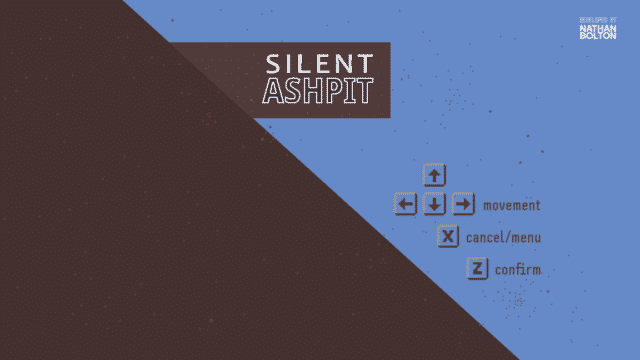
In this world…
criminals are used as forced labour.Descend the mines.
Pay your debt.
Style
- Atmosphere of dread and futility
- Ooky-spooky aesthetic – washed out with pops of red
- Ambient soundtrack
Gameplay
- Combat
- Turn-based, Action Point (AP) system where characters can take multiple actions per turn
- Can manipulate the stage: eg. spilling oil, then lighting it on fire
- 4 characters, each with a back-story and narrative goal
- Focused on money, loyalty, and a buried ancient evil
- Character loyalty system for making choices that line up with the character’s motivations
- With rewards for making characters loyal to you OR fear you, so it’s not too prescriptive
- Possibly also an insanity system, so characters you’ve abused too much will have a more negative description of how their lives turned out at the end
- Get to the end via a number of different routes
- Individualist: Pay off your debt
- Nihilist: Side with the cultists and unleash a great evil
- Revolution: Defeat the guards and break out of the work camp
- Traditionalist: defeat the great evil and lock it away for one more generation
- 4 base character classes, which each have 2 specialized subclasses, for 12 total
-
Cultist (Glass-cannon magic class)
- Dark Priest
- Necromancer
-
Sellsword (Well-rounded physical class)
- Iron Fist
- Berserker
-
Sawbones (Healing/support class)
- Mastermind
- Puppetmaster
-
Thief (Debuffer and pickpocket)
- Rogue
- Assassin
-
Cultist (Glass-cannon magic class)
- Estus-like healing system
- You can get 4 rations free each time you exit the dungeon and return to town
- Can request any combination of healing potions or power-up potions until to 4 total
- This creates a risk-reward system where players can either power themselves up or heal themselves
- You can get 4 rations free each time you exit the dungeon and return to town
- Money is your primary tool for advancement
- Is used for unlocking plot on one particular path, but it will provide useful rewards even if you’re not perusing that ending
- EXP may still be used for regular level-ups, but those will be weighted less important than equipment, which will be expensive
- If you find weapons in the mines, you have to pay to have them identified before they can be used
- Play time: 1~2 hours

